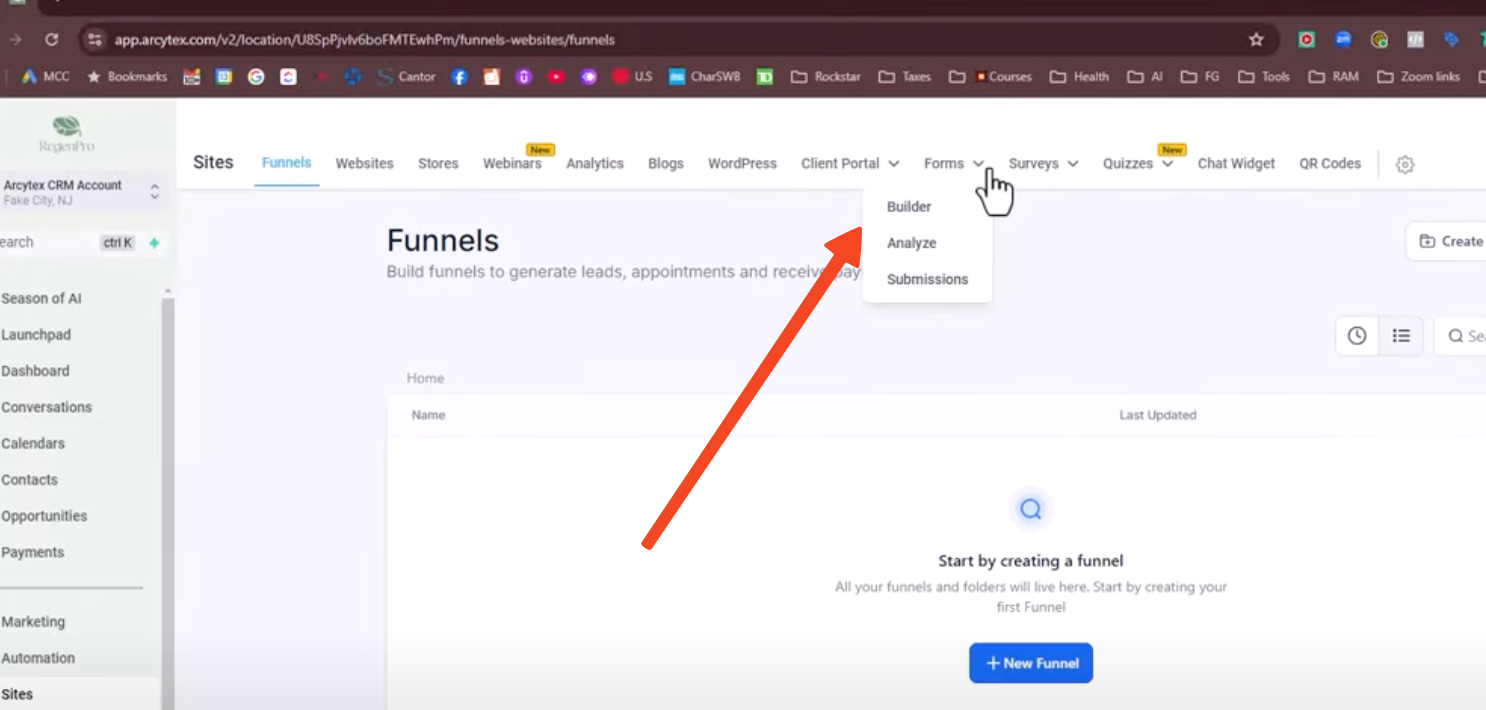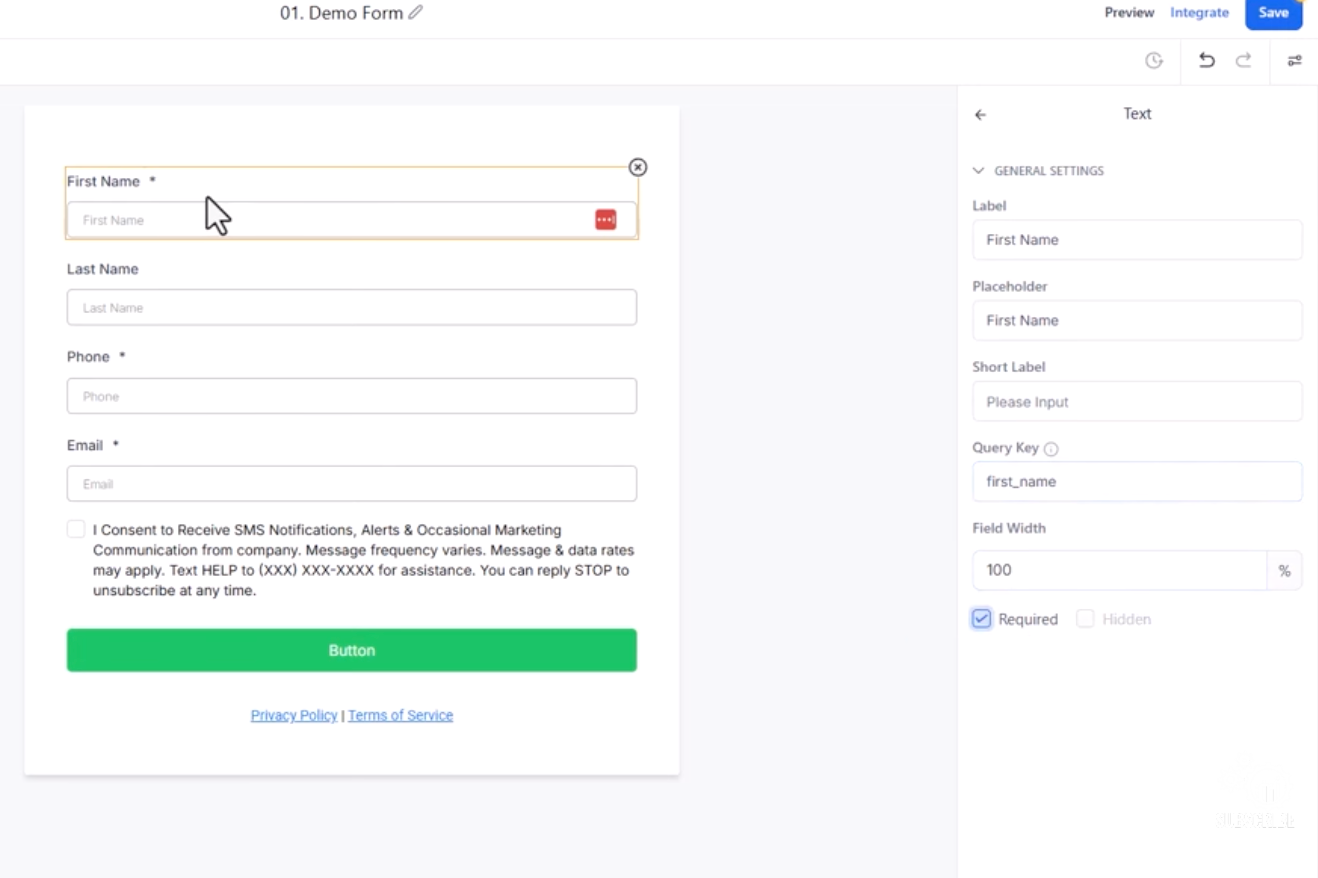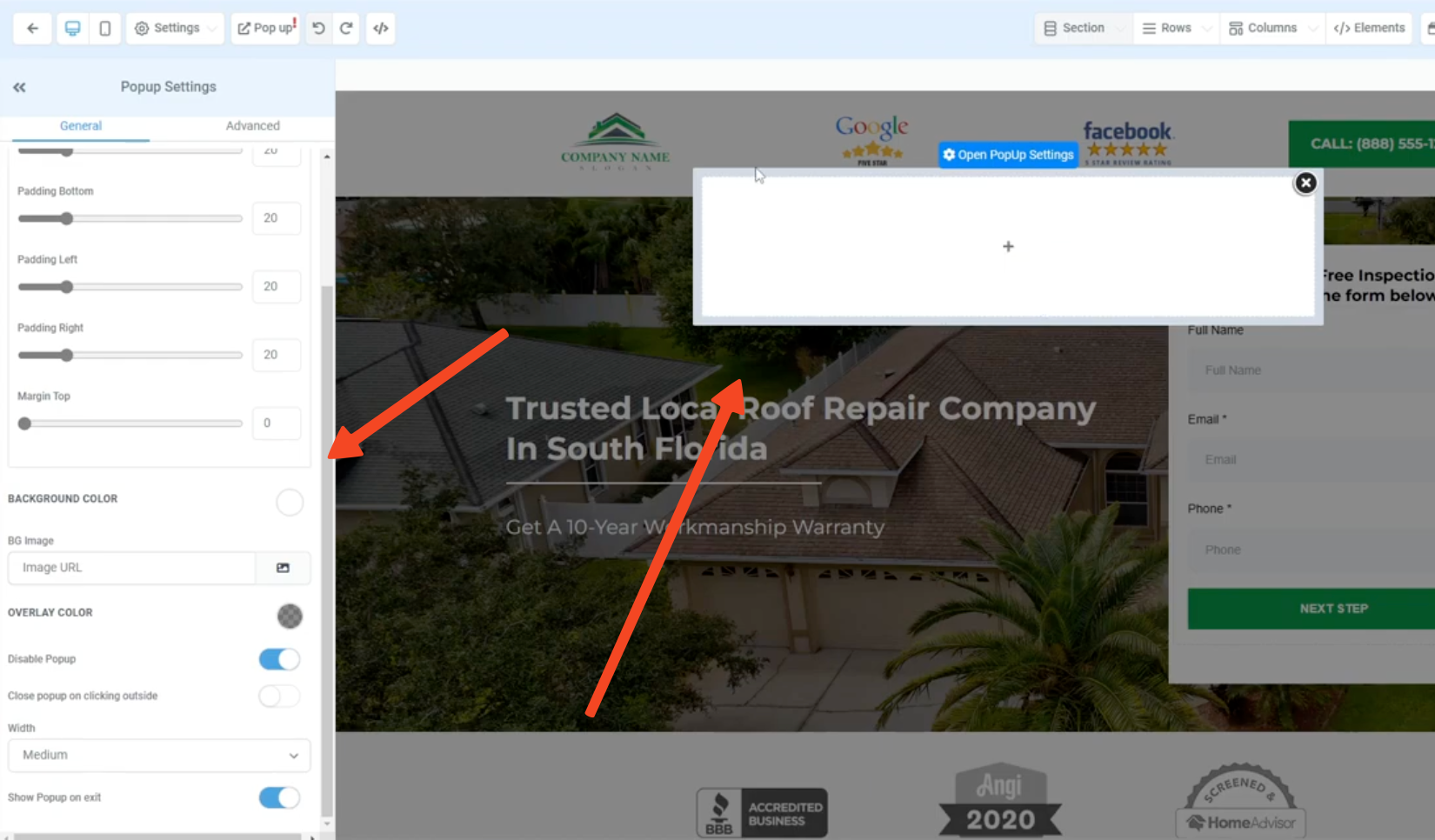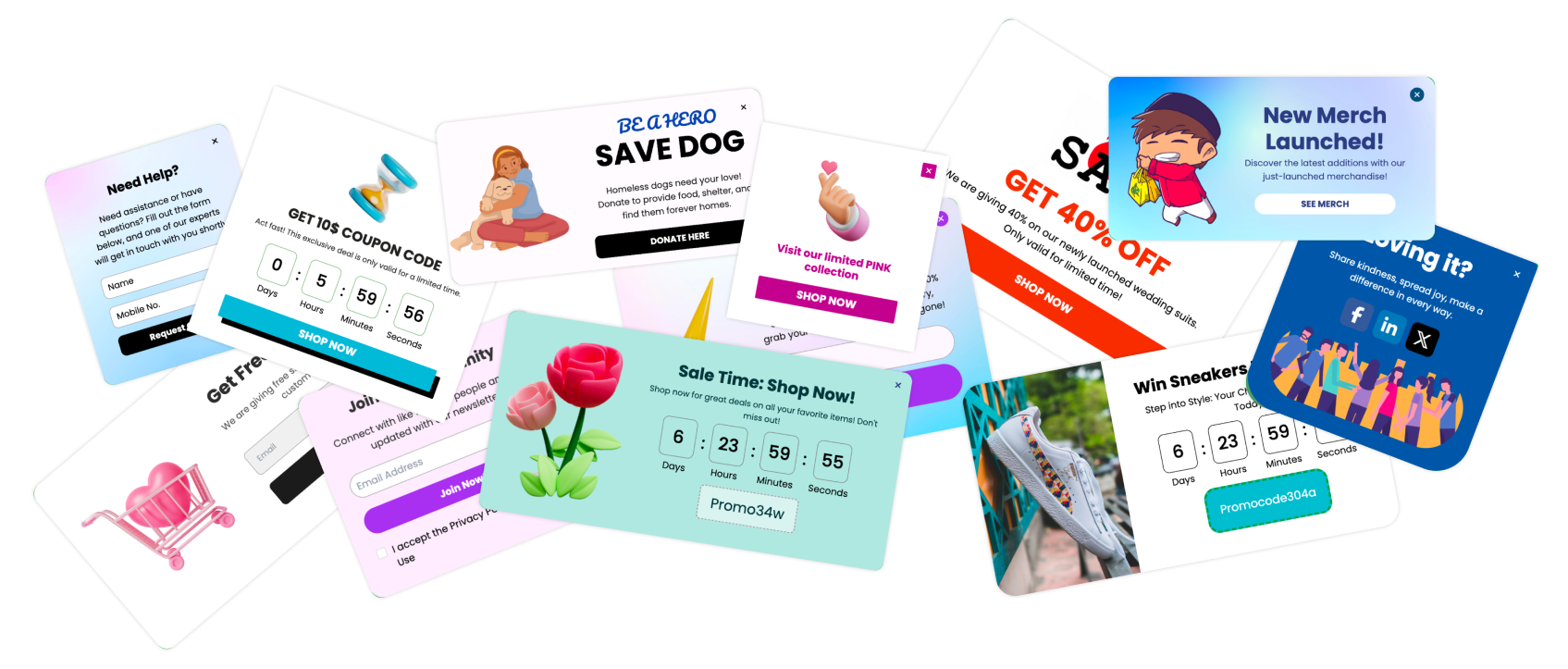I spend a lot of time thinking about the best ways to engage website visitors. A question I see a lot from GoHighLevel users is, "Should I use a form or a popup?"
It’s a great question because while they both capture information, they work in fundamentally different ways for GoHighLevel Form vs Popup.
Think of it like this: one is a destination, and the other is an interruption. Both are incredibly useful, but choosing the right one for the job is key. Let's break down when and why you'd use each one, and how Poper can help you manage it all.
Let's Talk About GoHighLevel Forms

A GoHighLevel form is what I’d call a "static" element. You build it using their drag-and-drop editor and then place it directly onto a page on your website or funnel. Visitors see it as part of the page content itself.

The key here is that the visitor usually arrives on the page with the intention of filling out the form.
For example, they clicked a "Contact Us" button and expect to see a contact form. They are actively seeking it out to provide their details.
This makes forms perfect for dedicated pages like contact pages, registration pages, or detailed inquiry pages.
Now, What About GoHighLevel Popups?

A popup, on the other hand, is an "interruption" by design. It appears on top of the page content based on a trigger you set up.
In GoHighLevel, a common trigger is a time delay—for instance, showing the popup 3 seconds after a visitor lands on your page.
This interruption is designed to grab attention immediately and present a specific, timely call to action. It’s not part of the page; it’s a separate event.
This makes popups ideal for things like offering a welcome discount, announcing a flash sale, or capturing an email before a visitor decides to leave.
The Key Difference: Intent vs. Interruption
So, what's the verdict? It all comes down to your visitor's mindset.
Use a form when your visitor is already committed and looking for a place to submit information. They've made the decision, and the form is the tool to complete that action. It's a destination.
Use a popup when you want to create an opportunity. Your visitor is browsing, and you interrupt their flow with a valuable offer to persuade them to act right now. It’s a pattern-interrupt that drives immediate conversions.
The Poper Approach: Combine the Best of Both with GoHighLevel
While GoHighLevel’s tools are solid, managing campaigns across different platforms can get complicated. This is exactly why I built Poper—to give you a central place to create smarter popups and forms that work seamlessly with your other tools, including GoHighLevel.
Step 1: Create Your Campaign in Poper

First, you can build your popup, embedded form, or floating widget right here in Poper. Our editor is focused entirely on creating high-converting campaigns.
You can design a "Welcome Discount" popup or an "Email Signup" form that matches your brand perfectly.
Step 2: Connect Poper to Your GoHighLevel Account

Next, you connect your Poper account to GoHighLevel. It's a straightforward process. Once linked, any leads you collect through your Poper campaigns—whether from a popup or an embedded form—will automatically be sent straight into your GoHighLevel contacts and workflows. No manual data entry needed.
Step 3: Target Your Visitors Smarter

This is where things get really powerful. With Poper, you can set up advanced display rules that go beyond a simple time delay. You can show specific popups based on the visitor's location, what site they came from, how many times they've visited, or even if they're about to leave the page.
This lets you deliver the perfect message at the perfect time.
By using Poper to create your campaigns and GoHighLevel to manage the leads, you get the best of both worlds: smarter targeting and streamlined automation.
GoHighLevel Form vs Popup: Key Differences Summarized
| Feature | GoHighLevel Form (Embedded) | GoHighLevel "Popup" (Typically Modal/Triggered Form) |
| Presentation | Static part of the page content | Appears as an overlay or modal window, often on action |
| User Intent | Visitor often expects it or seeks it out | Can be an interruption or a user-initiated reveal |
| Trigger | Always visible on the page (unless in a hidden section) | Usually triggered by a click, or sometimes a simple timer on a GHL page |
| Primary Goal | Collect detailed information, complete a transaction | Focus attention, present next step, reduce friction |
| Complexity | Can be long and detailed | Often shorter or a section of a larger form |
When to Use a GoHighLevel Form (Embedded)
Choose an embedded GoHighLevel form when:
Dedicated Information Collection: For "Contact Us," "Apply Now," "Request a Quote," or detailed survey pages where the form is the primary purpose of the page.
Clear Next Step: When the visitor has already shown high intent and is ready to provide information (e.g., after clicking "Get Started" for a service).
Multi-Field Requirements: When you need to collect a significant amount of information at once, and the user expects to provide it.
Standard Part of a Funnel Step: For order pages where the initial information fields are visible before progressing to payment.
When to Use a GoHighLevel "Popup" (Modal/Triggered Form)
Opt for a GoHighLevel modal form or a form revealed in a popup-like manner when:
Simplifying Complex Forms: Use a two-step order form where clicking a button reveals payment or shipping details in a modal. This reduces initial clutter.
Focused Call to Action: When a button click should immediately present a specific form (e.g., "Book a Demo" button opens a scheduling form in a modal).
Progressive Disclosure: To reveal form fields or offers only after a user has taken an initial action, keeping the initial page cleaner.
Inside GHL Funnels/Websites: These types of "popups" are most seamlessly integrated within pages built on the GoHighLevel platform.
Enhancing Popup Strategy with Third-Party Tools (like Poper) Integrated with GoHighLevel
While GoHighLevel is powerful for its forms and funnel-based "popups," you might want more advanced, general-purpose website overlay popups with sophisticated triggers (like exit-intent, advanced scroll triggers, specific page targeting on any website, not just GHL pages) and designs. This is where tools like Poper come in, designed to work with GoHighLevel.
The Poper Approach for Advanced Popups + GoHighLevel Integration:
Create Advanced Popups/Forms in Poper:
- Design visually appealing popups, slide-ins, or floating bars using Poper's dedicated editor. These can contain forms, CTAs, or announcements.
- The form within Poper can be a Poper-built form designed to collect leads.
- Alternatively, some advanced Poper use cases might involve embedding a GoHighLevel form inside a Poper popup canvas if you need GHL's specific form logic within a Poper-triggered overlay (this is a more technical setup).
Design visually appealing popups, slide-ins, or floating bars using Poper's dedicated editor. These can contain forms, CTAs, or announcements.
The form within Poper can be a Poper-built form designed to collect leads.
Alternatively, some advanced Poper use cases might involve embedding a GoHighLevel form inside a Poper popup canvas if you need GHL's specific form logic within a Poper-triggered overlay (this is a more technical setup).
Utilize Poper's Advanced Triggers & Targeting:
- Set up popups to appear on exit-intent (when a user is about to leave your website), after a certain scroll percentage, after a time delay, on click of any element, or based on visitor demographics, traffic source, or visit history.
- This allows for highly contextual and timely interruptions designed to convert.
Set up popups to appear on exit-intent (when a user is about to leave your website), after a certain scroll percentage, after a time delay, on click of any element, or based on visitor demographics, traffic source, or visit history.
This allows for highly contextual and timely interruptions designed to convert.
Integrate Poper with GoHighLevel:
- Connect your Poper account to GoHighLevel (often via API key, webhooks, or a direct integration if available).
- Leads collected through forms in your Poper popups can be automatically sent to your GoHighLevel contacts, triggering GHL workflows, campaigns, and adding tags.
Connect your Poper account to GoHighLevel (often via API key, webhooks, or a direct integration if available).
Leads collected through forms in your Poper popups can be automatically sent to your GoHighLevel contacts, triggering GHL workflows, campaigns, and adding tags.
When to Use Poper with GoHighLevel:
You want sophisticated overlay popups (exit-intent, scroll, advanced timed triggers) on your main website (which might be built on WordPress, Shopify, etc., not just GHL).
You need more design flexibility for your popups than what GHL might offer natively for general overlays.
You want to A/B test different popup designs and triggers extensively.
You want a centralized platform for managing all your website overlay popups, even if the leads flow into GoHighLevel.
Key Difference with Poper: Poper specializes in the popup delivery mechanism and design, offering a broader range of triggers and targeting for general website overlays, while GoHighLevel excels at form building and managing the subsequent lead nurturing and automation.
Conclusion: GoHighLevel Form vs Popup - It's About Strategy
The choice between an embedded GoHighLevel Form vs Popup (typically a modal/triggered form within GHL) depends entirely on your specific objective and the user's current stage in their journey.
Use embedded GoHighLevel forms when the user has clear intent to provide information or it's a standard part of your page/funnel.
Use GoHighLevel's modal/triggered forms ("popups") to simplify complex forms within funnels or to present a focused data capture step after a user action.
Consider third-party popup tools like Poper integrated with GoHighLevel when you need advanced, general-purpose website overlay popups (like exit-intent) with sophisticated targeting and design capabilities, ensuring captured leads are seamlessly fed into your GHL ecosystem.
By understanding these distinctions, you can strategically deploy the right tool at the right time to optimize your lead generation and conversion processes within your GoHighLevel setup.
Frequently Asked Questions (FAQ)
Can GoHighLevel forms be embedded on non-GoHighLevel websites?
Yes, GoHighLevel allows you to generate an embed code for your forms, which can then be placed on external websites (like WordPress, Shopify, etc.).
Does GoHighLevel have native exit-intent popup functionality for any website?
GoHighLevel's core strengths are its funnel builder, CRM, and automation. While it has ways to make forms appear in modals within its own pages, for advanced, site-wide exit-intent popups on external websites, users often integrate with specialized popup builders like Poper. Always check GoHighLevel's latest features as the platform evolves.
What's a "two-step order form" in GoHighLevel?
It's a common GHL feature where initial information (like name and email) is collected on the main page, and then clicking a button reveals the rest of the order form (payment, shipping) often in a modal or "popup" section. This is considered a type of GHL popup functionality.
Can I embed a GoHighLevel form inside a popup created by another tool (like Poper)?
Technically, yes. You could embed the GHL form's HTML code within the custom HTML section of a Poper popup. This allows you to use Poper's advanced triggers and targeting to display a GHL form.


